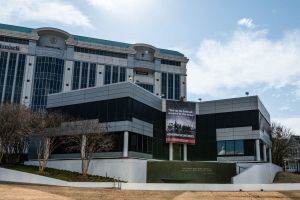Unchurched Prefer Cathedrals Over Contemporary Church Buildings
Unchurched Americans prefer churches that look more like a medieval cathedral over contemporary church buildings, a new study showed.
Although billions of dollars have been spent on church buildings and more contemporary designs, church attendance has declined, said Jim Couchenour, director of marketing and ministry services for Cogun Inc., a founding member of Cornerstone Knowledge Network. The network was thus prompted to ask, "As church builders what can we do to help church leaders be more intentional about reaching people who don't go to church?"
In a study conducted by LifeWay Research for Cornerstone Knowledge Network, the unchurched preferred more traditional looking buildings by a nearly 2-to-1 ratio over any other option. Given 100 "preference points" to allocate among four photos of church exteriors, the unchurched used an average of 47.7 points on the most traditional and Gothic options.
The other three options were given only 18.5 to 15.9 points.
"Quite honestly, this research surprised us," said Ed Stetzer, director of LifeWay Research and LifeWay Christian Resource's missiologist in residence. "We expected they'd choose the more contemporary options, but they were clearly more drawn to the aesthetics of the Gothic building than the run-of-the-mill, modern church building."
Stetzer believes unchurched Americans may be drawn to the look of the Gothic cathedral because it speaks to a connectedness to the past.
Young unchurched people particularly preferred the traditional look. Those between the ages of 25 to 34 gave an average of 58.9 of their 100 preference points to the more Gothic church exterior while those over the age of 70 gave that option only an average of 32.9 points.
One survey respondent said modern churches "seem cold."
"I like the smell of candles burning, stained-glass windows, [and] an intimacy that's transcendent," the respondent said.
"We may have been designing buildings based on what we think the unchurched would prefer," Couchenour noted. "While multi-use space is the most efficient, we need to ask, 'Are there ways to dress up that big rectangular box in ways that would be more appealing to the unchurched?'"
Most churches that look like a cathedral, however, are in decline, Stetzer pointed out.
"Buildings don't reach people, people do," Stetzer said. "But if churches are looking to build and are trying to reach the unchurched, they should take into consideration the kind of building. Costs and other considerations will play into the decision, but the preferences of the unchurched should be considered as well."
Survey results showed that more than half of the unchurched said the design of a church building would impact their enjoyment of a visit to church. Twenty-two percent said the design of the church would strongly impact their enjoyment of the visit and 32 percent indicated it would have some impact. More than a third said it would have no impact whatsoever on their visit.
The survey was conducted on 1,684 unchurched adults on Feb. 4 and 5. Unchurched people are defined as those who had not attended a church, mosque or synagogue in the past six months except for religious holidays or special events.




























